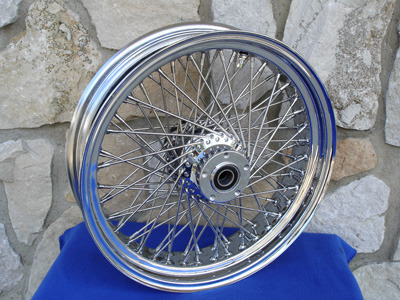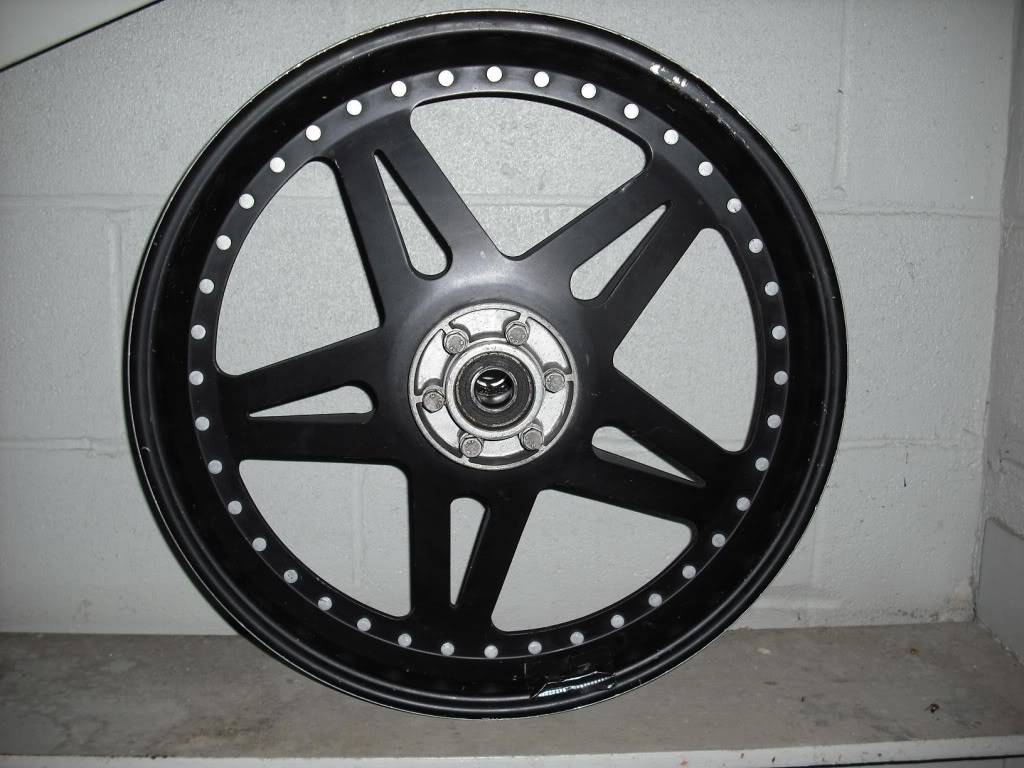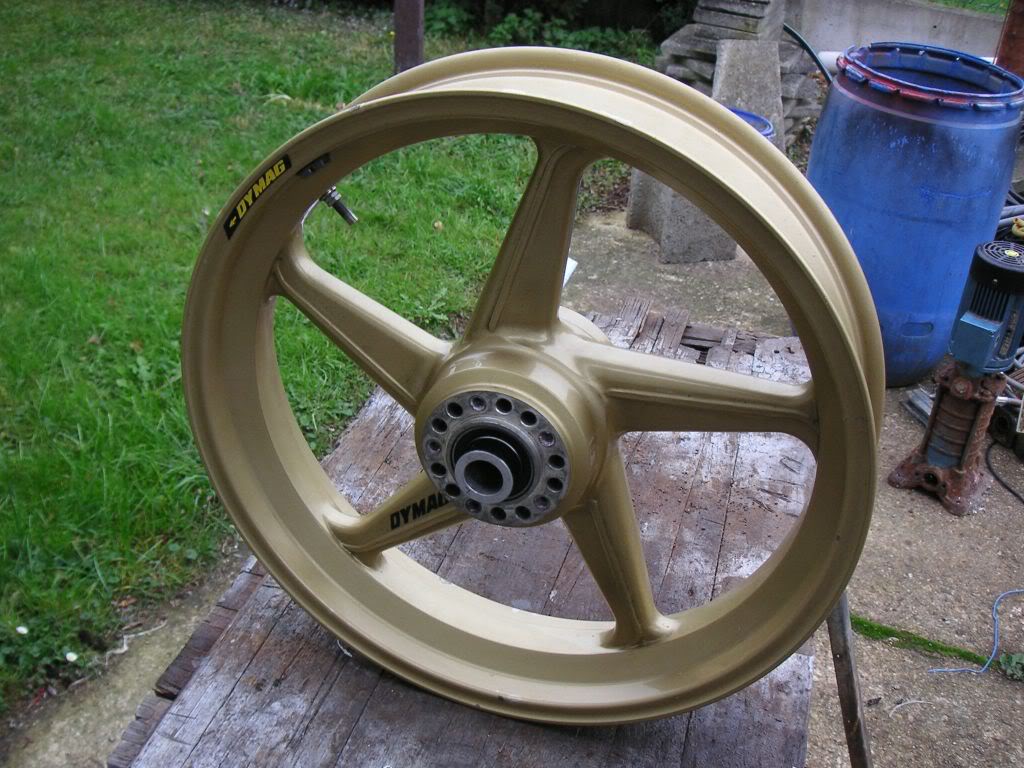Since the birth of the motorcycle the preferred way of joining the hub to the rim of the wheels are with wires called spokes that had a bend on one end to pass through a hole in the hub and a thread on the other end to pass through the center of the rim and be held to the rim with a threaded nipple that pulls the spoke tight.
Advances in wheel design such as cast aluminium Dimag wheels and pressed sheet aluminium Astralite wheels have over come the production lead times in wheel building.
The only problem with these two types of wheel is rigidity the cast aluminium or Dimag wheel is moulded or cast from molten aluminium mixed commonly with magnesium for lightness; the rim and hub are cast as an integral part. The cast spokes or beams are sometimes wasted in some ways such as hollow cast as will be found on a lot of modern superbikes.
Astralite wheels are produced by joining the hub to the rim with aluminium plate pressings that are usually bolted to the hub and then riveted to the rim, there wheels are lighter then cast wheels and are less rigid.
Spoked wheels are generally entirely hand built and the spokes are tightened to give the desired tension and trueness of the rim to the hub spindle.
Spoked wheels have certain advantages over other designs in as much as they have a degree of flexibility allowing them to absorb shock and stress that would otherwise be transferred to the frame members via there suspension. Off road sports such as trials, scrambles and speedway adopt spoked wheels for this very reason.
Classic and vintage circuit racers also use spoked wheels, they impart a certain feel to the machine that will give a good type of warning when the machine wants to break away or start to slide. Modern bikes do not necessarily have to rely on this little trait as suspension design right down to riding style has changed to give other little warning signs of impending break away.



